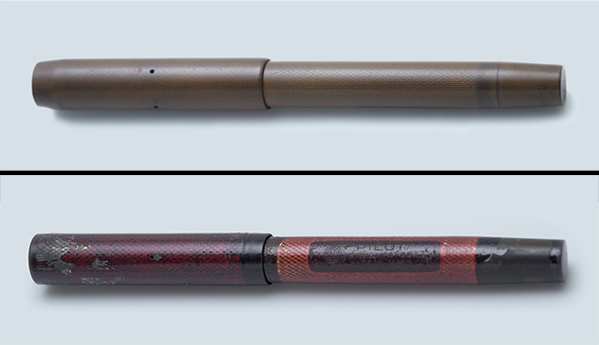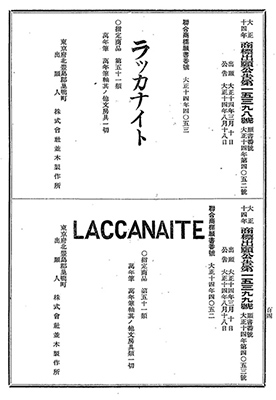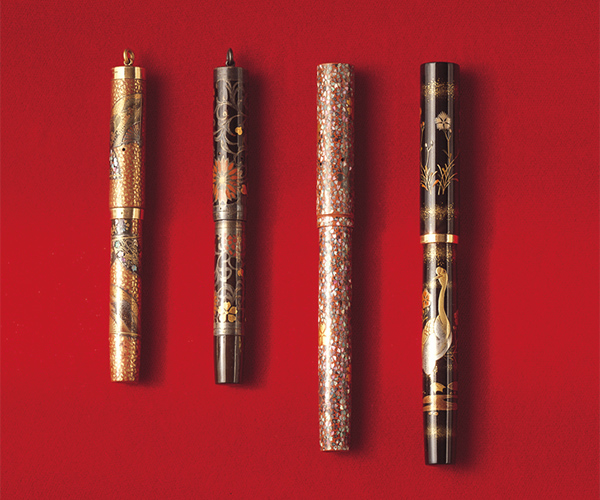LACCANAITE Patent
Maki-E Fountain Pens Result from Improvement in Fountain Pen Quality


In the early 1900s, a sulfur and rubber compound called ebonite was commonly used as the material for making fountain pen barrels.
With the passage of time, however, ebonite suffered from the drawbacks of surface discoloration and loss of luster due to ultraviolet rays and moisture.
To compensate for these shortcomings, PILOT focused on urushi, excellent lacquer with a worldwide reputation of which Japan is justifiably proud, and developed a surface treatment technology called LACCANAITE. In 1925, Pilot obtained patents in Japan and the United States for LACCANAITE, the world’s first surface treatment method to prevent ebonite from being discoloring by urushi.
By applying LACCANAITE processing and then the time-honored, traditional Japanese craft of maki-e, PILOT began manufacturing beautifully decorative maki-e fountain pens that exemplify Japan.
In this way, the PILOT fountain pen, which combines strength and beauty, came to be spread and accepted across the world.

